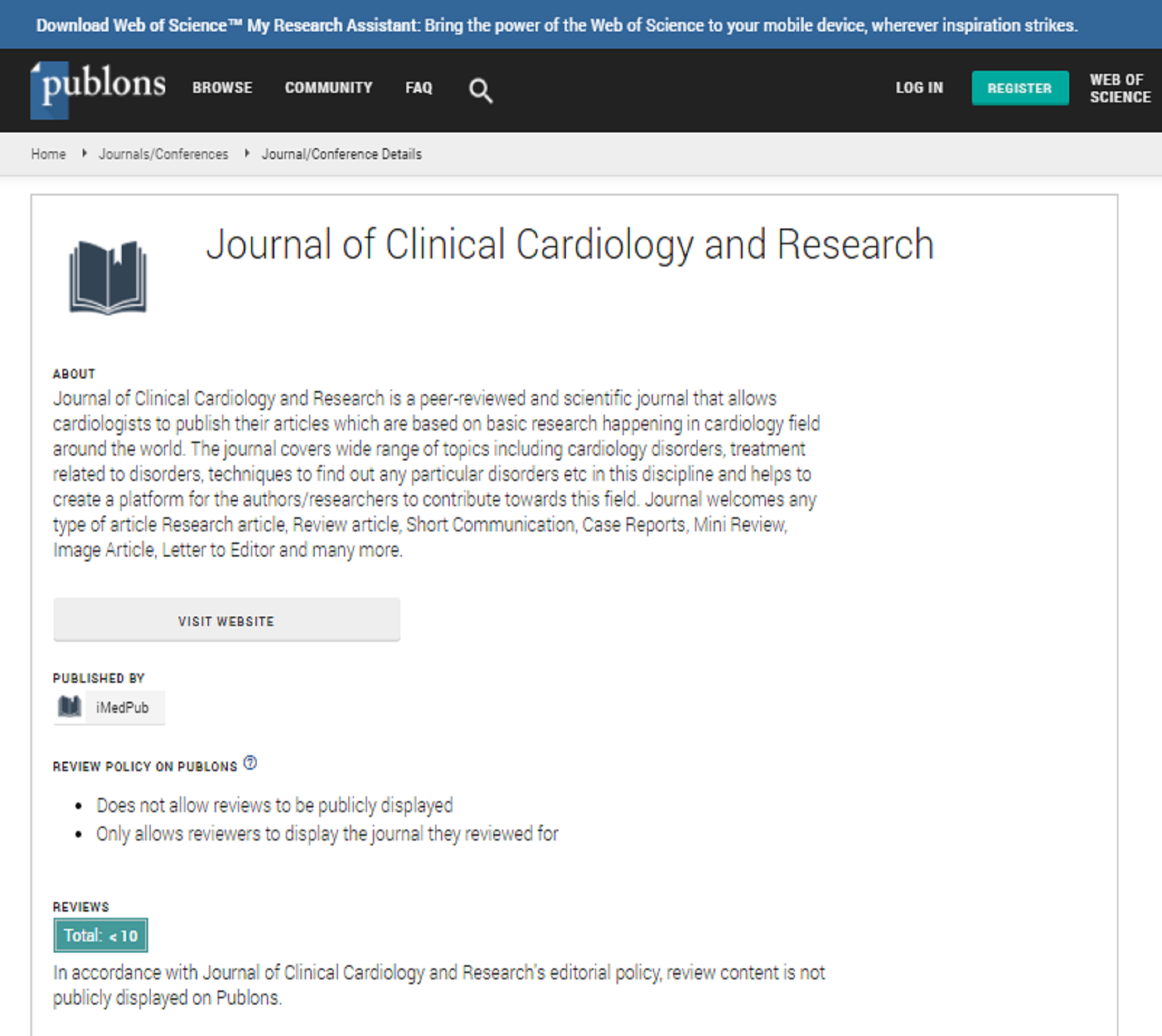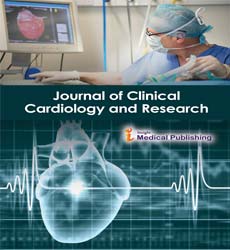Abstract
An Example of Controversies on Anti-fibrosis Therapies in Cardiovascular Diseases: Transforming Growth Factor beta 1
Transforming boom issue β1 (TGFβ1) is the pleiotropic cytokine, the features of which are various and frequently contradictory. In oxidative stress-associated cardiovascular ailments which includes hypertension, diabetes mellitus, and ischemiareperfusion damage and in regular getting older process, the expression of TGF β1 is increased. TGF β1 induces the expression of the genes worried in the accumulation of extracellular matrix (ECM). ECM offers mechanical stiffness to the coronary heart and vasculature to let them characteristic properly, however its immoderate accumulation ought to impair cardiac diastolic characteristic and scale down arterial drift reserve. Furthermore, the greater than regular expression of TGF β1 enhances ECM accumulation in the renal mesangium. The resultant discount of open capillary vicinity in the glomerulus leads to the limit in glomerular filration charge and persistent renal failure. In addition, the TGF β signaling has currently been tested to play a pivotal function in preserving the structural integrity of the aorta. Aortic aneurysm and dissection are factors of the vascular phenotype of Marfan syndrome. In human beings with Marfan syndrome kind 1, which is brought about with the aid of mutations in the fibrilin-1 gene (FBN1), circulating concentrations of TGF β1 and the expressions of TGF β1 in primary-cultured vascular clean muscle cells are expanded. In the mouse mannequin of Marfan syndrome, angiotensin kind 1 receptor antagonist losartan has been proven to be advantageous to decelerate the increase of thoracic aortic aneurysms, by way of suppressing TGFβsignaling. The Loeys-Dietz syndrome (LDS), an autosomal dominant human syndrome induced with the aid of mutations in each type1 and type2 TGFβreceptor genes (TGFBR1 or TGFBR2), is characterised with the aid of aggressive aneurysms in the ascending aorta. Immunoreactivity of phosphorylated Smad2, an intracellular signaling molecule downstream of TGFβreceptors, is improved in the aortic wall of sufferers with LDS, suggesting that the mutations inflicting LDS are hypermorphic. However, a later learn about tested that the LDS-associated mutation in the TGFβreceptor gene alternatively attenuates canonical TGFβ signaling in cultured human embryonic kidney cells. Current appreciation is that the hypomorphic mutations for the TGF β receptor genes ought to compensatorily stimulate its downstream signaling in sufferers with LDS. These findings point out that TGF β1 is a detrimental cytokine that is triggered in many cardiovascular diseases, and a quantity of pharmaceutical sellers have already been developed for this purpose. However, latest research have counseled that suppressing TGF β1 additionally motives devastating cardiovascular diseases. For instance, Marfan syndrome kind two is related with a loss-offunction mutation in the TGF β receptor two gene (TGFBR2). Recently, it has been found that loss-of-function mutations in a ligand TGFB2 motives aneurysms and dissections in the ascending aorta and the sinus of Valsalva.F This work is partly presented at Pediatric Cardiology & Heart Failure at July 20-21, Webinar Vol.3 No.1 Extended Abstract Journal of Clinical Cardiology and Research 2020 Mice definitely missing TGF β1 in advance die from systemic inflammatory sickness round weaning. Cardiomyocyte/smooth muscle-specific disruption of kind two TGF β receptor gene (Tgfbr2) motives no longer solely wall thinning and rupture of the aorta, however additionally coronary heart defects which includes ventricular myocardium hypoplasia in mice [14]. Likewise, postnatal easy muscle-specific disruption of Tgfbr2 additionally dilated and dissected thoracic aorta. Mice with genetic insufficiency of TGF β1 showcase fundamental aldosteronism and marked impaired dieresis and natruresis, which should exacerbate the cardioaortic dilatative modifications. Despite TGF β1 has double-edged results in cardiovascular diseases; it looks that the suppression of TGF β1 reasons greater lifethreatening effects than its stimulation does. Although anti-TGF β1 treatments may want to be beneficial to decrease pathological modifications in cardiovascular illnesses when carried out in tissue and/or time unique manners, stopping the stipulations in which TGF β1 has to be prompted may also be greater realistic to enhance conventional prognosis of cardiovascular diseases.
Author(s): Masao Kakoki
Abstract | PDF
Share This Article
Google Scholar citation report
Journal of Clinical Cardiology and Research peer review process verified at publons
Abstracted/Indexed in
- Google Scholar
- Publons
Open Access Journals
- Aquaculture & Veterinary Science
- Chemistry & Chemical Sciences
- Clinical Sciences
- Engineering
- General Science
- Genetics & Molecular Biology
- Health Care & Nursing
- Immunology & Microbiology
- Materials Science
- Mathematics & Physics
- Medical Sciences
- Neurology & Psychiatry
- Oncology & Cancer Science
- Pharmaceutical Sciences



